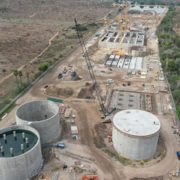Where Does the Colorado River Start? Mapping the Stream From the Headwaters to the Basins.
The Colorado River crosses seven states and Mexico and is 1,450 miles long – the sixth longest in the nation according to river conservation organization American Rivers. More than a natural spectacle, the river supplies drinking water for one in 10 Americans and just half of the river water nourishes nearly 90% of the nation’s winter vegetable crops.



